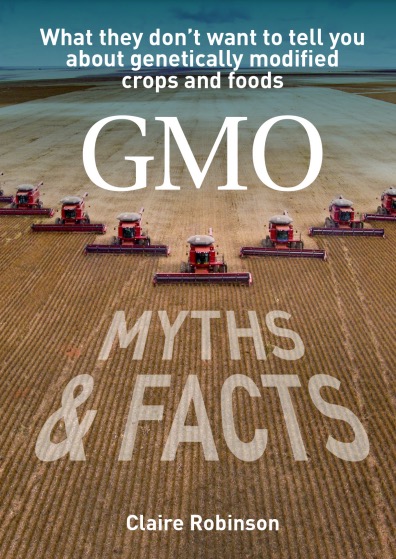originated John Stauber of PR WATCH <http://www.prwatch.org/> who also writes: 'Given recent developments, we've decided to put our entire Mad Cow USA book up on ourwebsite, free, in PDF format. There is a ton of confusion about TSE diseases, and the US government is failing to adequately guard against CWD, scrapie and similar diseases in the US. We hope making the book available might help the international debate and regulatory action need[ed] around this issue.'
This also needs to be seen in the context of the UK government's massive offloading of infected cattle feed on the Third World once it became unacceptable to export it to the 'First World'! The decision to continue to sell the potentially lethal feed was taken despite the then Chief Medical Officer, Sir Donald Acheson, 1991 warning`: “we should take steps to prevent these U.K. products being fed to ruminants in other countries ... Unless such action is taken, the difficult problems we have faced with the BSE may well occur in other countries.” http://members.tripod.com/~ngin/JM087.htm
As governments belatedly awake to the problem of bonemeal in cattle feed (Rudolf Steiner was warning of the dangers of turning cattle into carnivores in 1923, apparently!), their sudden rush to ban it leaves the way open for far greater quantities of GM soymeal being fed to livestock. No one, of course, has the faintest idea as to what the long term impact of this on human and animal health may be -- no such research having, of course, been carried out.
---
WHO warns mad cow has spread worldwide
OTC (COMTEX Newswire)
Dec 23, 2000
GENEVA, Switzerland, Dec. 23 (UPI) -- World Health Organization medical experts said Friday the global agency is concerned the mad cow disease and its fatal human variant Creutzfeldt-Jacob Disease has spread worldwide through the movement of contaminated materials. "We have concerns that there was sufficient international trade in meat and bone meal and cattle that there has actually been exposure worldwide already,"Dr. Maura Ricketts, of the WHO's animal and food-related public health risks unit, told reporters following an informal meeting of scientific and policy experts from international agencies. The WHO estimates that between Nov. 1986 and Dec. 2000 about 180,000 animal cases of BSE were confirmed in the United Kingdom and about 1,300 in other European countries primarily France, Ireland, Portugal and Switzerland. Moreover, Germany and Spain reported their first cases in November of this year. Moreover, since October 1986 to early December 2000, says the WHO, 87 cases of disease have been reported in the UK, three in France and a single case in Ireland. The fatal human variant is strongly linked with the exposure to the BSE agent "most plausibly due to dietary contamination by affected bovine central nervous system tissue," says the WHO. Ricketts said the BSE epidemic appears to have been caused by the recycling of animal carcasses in meat and bone animal feed. "Meat and bone meal remain a big problem and this is how BSE is being transferred among cattle for the most part, " she said. In cattle the disease is found primarily in the brain, the eyes, the spinal cord and parts of the digestive tract.
According to another WHO expert, Dr. Francois Meslin, the United Kingdom between 1986 and 1996 spent about $7.5 billion to deal with the BSE outbreak which devastated its livestock industry. The WHO and other related agencies tracking the fatal BSE, such as the U.N. Food and Agriculture Organization and the World Animal Health Organization (OIE), said there is reason for concern because, "We are certain there was international movement of materials that could have contained infectivity."
"We have enough information that potentially contaminated materials were exported outside the European Community," added Ricketts, who went on to say that it is not possible to confirm which countries might be affected until the WHO and the other agencies have had a chance to gather information in each country individually. The experts pointed out the way food and cattle feed moves across borders is not very transparent and needs to be studied as do slaughterhouses, and other processing facilities such as mechanical meat packing. Ricketts stressed that some of the countries that received contaminated material do not have the surveillance systems to detect disease in cattle populations nor in human populations and "we feel they must find out for themselves and for us."
Some of the surveillance that needs to be in place to detect both the animal and human strains of the disease is exceptionally expensive for poor developing countries, the experts said. Ricketts said it would be clearly to no one's benefit if even a small number of cases of BSE were present in a country that is developing trade in animal products and which then re-exported the disease to countries that have done a good job in controlling it. Meslin observed that the tests made today are useful for the surveillance of the BSE disease but in terms of food safety they "might be giving consumers a false security." He noted that in some animals there might be negative blood tests but there might still be some infectious agents.
Finally, the experts said more scientific information and investigation is also required to determine whether or not BSE has also infected other animals such as sheep and, in particular, pigs. The BSE agent, notes the WHO, resists freezing, drying and heating at normal cooking temperatures. The agent is very difficult to destroy, said Rickets, who noted that in experiments it still had infectivity left after being exposed to temperatures of 600 degrees Centigrade The WHO said it is scheduled to hold more specialists' meetings in January and will hold a major conference in late May to review scientific developments and to try and muster support for more countries to undertake risk assessment of every related area of the animal and food chain.
(c) 2000 UPI All rights reserved. Copyright 2000 by United Press International. Copyright 2000









